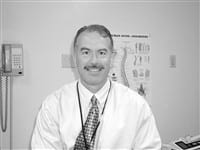Opinion New Restrictions On Residents’ Hours Challenge Hospitals
The recent decision by the Accreditation Council for Graduate Medical Education to limit to 80 the number of hours residents are allowed to work each week has drawn almost universal and well-deserved praise.
In all practical respects, it would be desirable to have well-rested and alert doctors rendering care to hospital patients. A 1998 report by the Institute of Medicine claimed that between 44,000 and 98,000 Americans die each year due to errant hospital care, and certainly the council’s step to limit resident hours will go far to eliminate the number of medical errors that might be attributable to overworked, sleep-deprived residents.
While these guidelines are laudable, however, implementation of them is not without considerable challenge to teaching hospitals. In particular, the change will translate into significant additional costs to hospitals already facing declining reimbursements and proposed cuts in Medicare Indirect Medical Education Payments.
No one can reasonably maintain that poor care rendered by sleep-deprived physicians is acceptable, and it would appear that enforcing a mandatory ceiling on how many hours residents can work is the most direct and rational approach to addressing this issue. However, as is often the case in health care, the solution is not without problems of its own.
Perhaps a parallel can be drawn to the state of nursing in the 1950s and 1960s. At that time, many hospitals had hospital-based or diploma schools of nursing. The schools provided a steady source of nursing staff to the hospitals in that the schools required the students to work a significant amount of time in the hospitals as part of their educational experience. As a result, most hospital nursing staffs consisted of several RNs employed to serve in supervisory roles, and the remainder of the staff was comprised of the nursing diploma school students.
The hospital industry moved away from this model, in part, when criticism emerged that the hospitals were using what amounted to free labor. Needless to say, when student nurses were no longer available in such large numbers to staff hospitals, hospitals had to begin to allocate considerable money to pay for this professional service to their patients.
In 2002, these teaching hospitals — and the entire academic medical system — rely heavily on their residents. Residents are an invaluable resource for hospitals — well-trained, eager, cost-effective employees. Now that this resource will be diminished considerably, hospitals will have to figure out a way to bridge the gap.
It’s simplistic to suggest that hospitals will simply be able to find more residents — it’s not as if there is a huge, untapped supply of out-of-work residents.
Undoubtedly, the reduced schedules that residents will be able to work means that hospitals will therefore need to find other physicians to fill the void — physicians who require larger salaries than those paid to residents. At the same time, fewer resident work hours will mean less direct Medicare reimbursement for the hospitals.
While the hope is that better-rested residents will create improved safety at hospitals, it will no doubt create situations in which hospitals face some difficult and complex decisions. Adequate physician staffing of these teaching hospitals will likely be an ongoing and difficult challenge.
Obviously, everyone desires patient care to be provided safely. But in the end, it’s entirely possible that an exhausted doctor may be preferable to no doctor at all.
Renee H. Martin is an associate in the Healthcare Practice Group at the law firm Wolf, Block, Schorr and Solis-Cohen in Philadelphia. She is also a registered nurse who spent 14 years in nursing before joining the legal profession.

